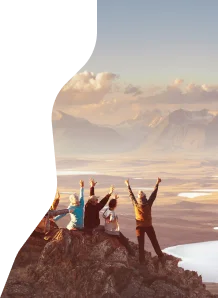Become a Culture Tripper!
Sign up to our newsletter to
save up to $1,656 on our unique trips.

Situated in the heart of Bolivia’s agricultural belt, virtually all its surrounding woodlands have disappeared from deforestation to make way for large-scale soybean production. As a result, a sizable contingent of wildlife has migrated to San Miguelito, which is now the last refuge of unspoiled wilderness in the region.
Eco-enthusiast and San Miguelito property owner Dustin Larsen realized the potential of his land to protect vulnerable native fauna. Over time, he scaled back cattle-rearing and dedicated a massive portion of the property as a natural habitat to all kinds of animals, including the jaguar.
Wildlife spotting trip in San Carlos | © Nick’s Adventures

Big cats such as the puma and jaguar periodically continue to prey on cattle around the reserve – an inevitable occurrence that has proven impossible to completely prevent. However, a portion of the profits from the venture goes towards fully compensating local farmers to replace their lost livestock. In turn, this discourages the farmers from hunting the endangered cats who no longer cause a financial loss.
Since it began four years ago, San Miguelito has become a resounding success. The ranch currently boasts a jaguar population of 11 animals per 38.6 sq mi (100 sq km) – among the highest in Latin America. As a result, sighting one of the elusive creatures is an enthralling experience that a number of guests have had the luxury of enjoying.
Inspired by this success, the Leigue Roth family started the similar San Carlos Wildlife Eco Reserve project. With help from a group named ConservaciĂłn Loros Bolivia, it began operation in March 2017.
Nestled within the wildlife-rich Rio Negro Corridor of Beni, San Carlos is home to an array of exotic fauna including pink dolphins, black caimans, giant anteaters, countless species of monkey and – of course – the jaguar.
In fact, biologists estimate up to 80 mammal, 400 bird, and 25 reptile species live in this region alone.
Anteater in San Carlos | © Nick’s Adventures

But more than anywhere else in Bolivia, Beni depends on its burgeoning agricultural industry. After all, cattle represent the primary source of income for its inhabitants. And much like the surroundings of San Miguelito, the locals routinely hunt predatory animals to protect their sizable investments.
Above all else, the San Carlos Reserve strives to change local attitudes by demonstrating how sustainable eco-tourism can become a viable source of income.
Combined with added government pressure in the form of educational campaigns and strict anti-poaching laws, a gradual paradigm shift does indeed appear to be taking place.
A Jaguar | © cmart29 / pixabay | © cmart29 / Pixabay

“There used to be groups of hunters everywhere. At each checkpoint every weekend there were people dressed in camouflaged on the way to a hunt. Today that has diminished,” zoologist Marco Antonio Greminger told Mongabay.
One success story is that of Hairo Reynaldo Toledo, a 25-year-old former farmer and hunter. After visiting San Carlos Wildlife Eco Reserve for himself, Toledo gave up his profession to become a tour guide on the ranch and protect its vulnerable inhabitants.
Of course, neither initiative could take off without a steady influx of paying visitors. Interest in eco-tourism is modest within Bolivia, which means capturing the attention of the international market is paramount to the success of both projects.
Nick setting a camera trap in San Miguelito | © Nick’s Adventures

Enter Nicholas McPhee, the Australian born owner of Nick’s Adventures, whose passion for wildlife conservation prompted him to market both projects to his foreign clientele.
“I decided to get involved after seeing so many animals pointlessly killed by ranchers and hunters, which really made me think about potential solutions. I’d seen other examples of successful conservation projects in Brazil and Africa, which inspired me to attempt it here,” he told Culture Trip.
According to Nick, the purpose of these conservation tours is to “provide employment, preserve habitats (not just for big cats but for other species as well),” and to create an idea that he “hopes will spread among other ranchers.”
Eco-tourists interested in the project are able to book San Carlos and San Miguelito excursions online. Both of which have received rave reviews for regular jaguar sighting, including a mother and her two cubs.
Not only will participants get the chance to observe exotic wildlife in its natural habitat, but they’ll be making a meaningful contribution towards the much-needed conservation of the majestic jaguar, as well as other at-risk Amazonian species.
Culture Trips launched in 2011 with a simple yet passionate mission: to inspire people to go beyond their boundaries and experience what makes a place, its people and its culture special and meaningful. We are proud that, for more than a decade, millions like you have trusted our award-winning recommendations by people who deeply understand what makes places and communities so special.
Our immersive trips, led by Local Insiders, are once-in-a-lifetime experiences and an invitation to travel the world with like-minded explorers. Our Travel Experts are on hand to help you make perfect memories. All our Trips are suitable for both solo travelers, couples and friends who want to explore the world together.
All our travel guides are curated by the Culture Trip team working in tandem with local experts. From unique experiences to essential tips on how to make the most of your future travels, we’ve got you covered.
Source link : https://theculturetrip.com/south-america/bolivia/articles/how-these-bolivian-ranches-are-helping-to-conserve-endangered-jaguars
Author :
Publish date : 2020-04-21 03:00:00
Copyright for syndicated content belongs to the linked Source.










